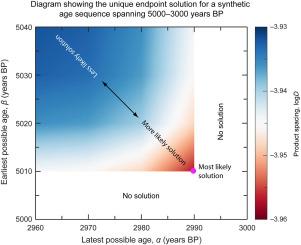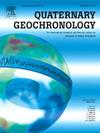Maximum spacing estimation of chronological boundaries in discrete and uncertainty-prone age sequences
IF 2.5
2区 地球科学
Q3 GEOGRAPHY, PHYSICAL
引用次数: 0
Abstract
Estimating the endpoints of age sequences is a crucial task in archaeological and geological sciences. Here we advance this process by addressing three major limitations in previous approaches. First, we introduce a maximum spacing estimation method to simplify the conventional maximum likelihood estimation approach. Second, we apply Monte Carlo simulations to account for uncertainties in laboratory-derived ages. Third, we utilize a range of probability distributions to manage sampling variability, improving the accuracy and reliability of chronological inferences. This method is versatile, applicable not only for estimating settlement time from smaller datasets but also for determining the timing of rise and fall of cultures from larger datasets. Rigorous testing on both simulated and real-world chronological data demonstrates the practical utility and robustness of this method in handling discrete and uncertainty-prone age sequences. Comparative analysis shows that different statistical models significantly impact the estimation of chronological boundaries. Uniform and exponential models provide more constrained estimates with higher confidence, while normal and log-normal models introduce greater uncertainty. These wider intervals may reflect underlying uncertainties, such as stratigraphic variability or mixed-age samples, which restrictive models may overlook. We also highlight the sensitivity of age sequence estimates to data size, with important implications for interpreting the temporal boundaries of archaeological and geological events. Therefore, researchers are encouraged to carefully assess the nature and frequency distribution of their chronological data before considering the narrower estimates from uniform and exponential models as well as the broader intervals from normal and log-normal models to build more reliable chronological frameworks.

离散和不确定年龄序列中时间边界的最大间距估计
估计年龄序列的终点是考古和地质科学的一项重要任务。在这里,我们通过解决以前方法中的三个主要限制来推进这一过程。首先,我们引入了一种最大间距估计方法来简化传统的最大似然估计方法。其次,我们应用蒙特卡罗模拟来解释实验室推导年龄的不确定性。第三,我们利用一系列概率分布来管理抽样变异性,提高时间推断的准确性和可靠性。这种方法是通用的,不仅适用于从较小的数据集估计沉降时间,也适用于从较大的数据集确定文化兴起和衰落的时间。对模拟和现实世界时间序列数据的严格测试表明,该方法在处理离散和不确定性倾向的年龄序列方面具有实用性和鲁棒性。对比分析表明,不同的统计模型对时间边界的估计有显著影响。均匀和指数模型提供了更有约束的估计,具有更高的置信度,而正态和对数正态模型则引入了更大的不确定性。这些较宽的间隔可能反映了潜在的不确定性,如地层变异性或混合年龄样本,而这些都是限制性模型可能忽略的。我们还强调了年龄序列估计对数据大小的敏感性,这对解释考古和地质事件的时间边界具有重要意义。因此,在考虑均匀模型和指数模型的较窄估计以及正态模型和对数正态模型的较宽间隔之前,鼓励研究人员仔细评估其时间数据的性质和频率分布,以建立更可靠的时间框架。
本文章由计算机程序翻译,如有差异,请以英文原文为准。
求助全文
约1分钟内获得全文
求助全文
来源期刊

Quaternary Geochronology
地学-地球化学与地球物理
CiteScore
4.40
自引率
22.20%
发文量
130
审稿时长
20 weeks
期刊介绍:
Quaternary Geochronology is an international journal devoted to the publication of the highest-quality, peer-reviewed articles on all aspects of dating methods applicable to the Quaternary Period - the last 2.6 million years of Earth history. Reliable ages are fundamental to place changes in climates, landscapes, flora and fauna - including the evolution and ecological impact of humans - in their correct temporal sequence, and to understand the tempo and mode of geological and biological processes.
 求助内容:
求助内容: 应助结果提醒方式:
应助结果提醒方式:


